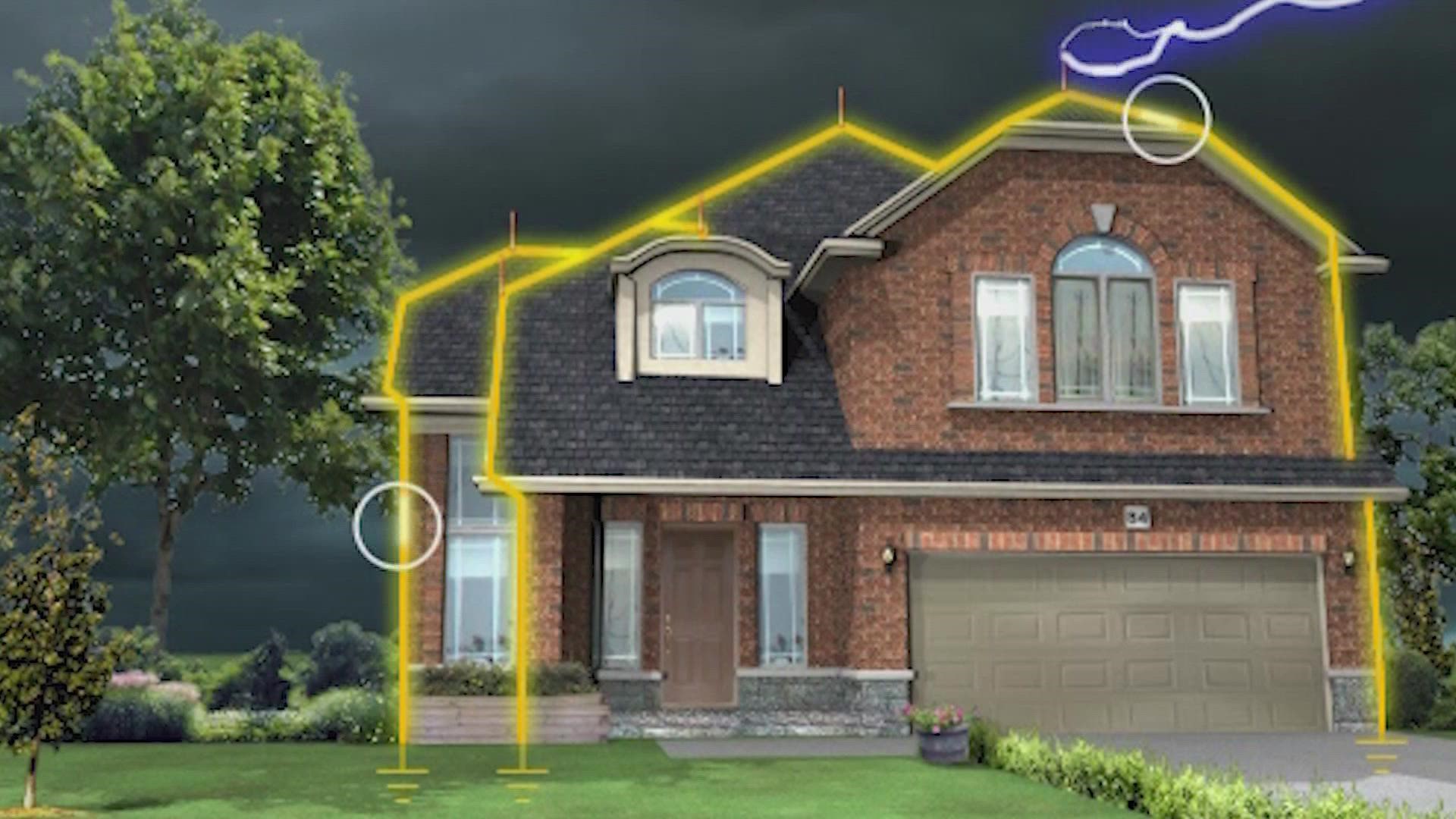HOUSTON — A fire Thursday afternoon in southeast Houston left several families without a roof over their heads.
According to the Houston Fire Department, a dozen units were damaged in the fire. While nobody lost their life or was reported injured, the loss of property was devastating for some.
One company hopes to help prevent tragedies like Thursday's fire from happening using technology that diverts potential lightning strikes.
"A lot of these strikes can cause damage to your home," said Marvin Alexander with Bonded LP.
The company uses what they call "air terminals," which look kind of like lightning rods, to help keep homes safe. The terminals, which are installed at the highest points of a home, are meant to give the lightning a path to the ground and protect the house and everything inside it.
"Houston is number one in lightning strikes in Texas," said Alexander. "It protects you, not just your home, but it protects your memories and protects it protects your family.”
Between 4:30 p.m. and 6:30 p.m. on Thursday, we reported more than 11,000 lightning strikes in the Houston area.
The Houston Fire Department confirmed on Friday that the apartment fire that displaced a dozen units was likely caused by lightning. The fire caused nearly $700,000 worth of damage, according to the department. They said the building the fire was in was a total loss.
“I’m pretty much homeless at this point, don’t have a roof over my head now," said one resident impacted by the fire.
Alexander said most homes don't come standard with lightning protection. While insurance can cover the damage, he says his company's technology can help avoid it in the first place.
It can cost anywhere from $4,000 to $10,000 to install the system in a home. Alexander says the installation typically takes a few days.

